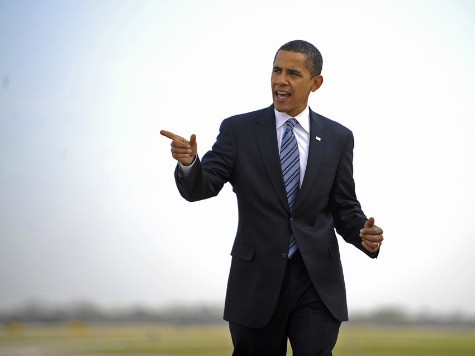
The Obama White House is scrambling to blame Friday’s abysmal March jobs numbers on the sequester’s trimming of the rate of growth in federal budgets that have yet to fully commence.
After the Labor Department announced that a mass exodus of 663,000 workers left the U.S. workforce last month and that job creation fell 112,000 jobs short of projections, Obama’s top economic adviser Alan B. Krueger, took to the White House blog to blame the sequester:
It is important to bear in mind that the March household and payroll surveys are the first monthly surveys to look at employment since the beginning of sequestration. While the recovery was gaining traction before sequestration took effect, these arbitrary and unnecessary cuts to government services will be a headwind in the months to come, and will cut key investments in the Nation’s future competitiveness. The Congressional Budget Office has estimated that the sequester will reduce employment by 750,000 full-time equivalent jobs by the end of the year.
Now is not the time for Washington to impose more self-inflicted wounds on the economy. The administration continues to urge Congress to replace the sequester with balanced deficit reduction, while working to put in place measures to put more Americans back to work like rebuilding our roads and bridges and promoting American manufacturing.
Krueger did not mention January’s 2% payroll tax increase, which will wipe out an entire year’s worth of wage gains by American workers. Roughly 70% of national expenditures emanate from consumers.
Kathy Bostjancic, Director of Macroeconomic Analysis for The Conference Board business research group, says the major flaw in Obama’s argument is that the sequester has not kicked in yet.
“What is even more troubling about the most recent slowdown is that it takes place even before the sequester cuts materially hit the economy,” Bostjancic stated in a press release. “This reinforces our view that the estimated 3.5 percent real GDP growth in Q1 is not likely to be sustained. Instead, we see the overall economy, led by the consumer, downshifting significantly in the second quarter, struggling to get close to 1 percent real growth.”
The need to curb Washington’s spending will have an effect on jobs, says Bostjancich, but they will likely be centered around “further contraction in government sector jobs.”
Indeed, the unemployment rate for government workers is less than half (3.6%) the national unemployment rate. Since July, the government has added 618,000 government workers to its payrolls, employing 20,633,000 individuals.
While Friday’s reporting shows a 7.6% unemployment rate, the real rate–including the millions who have given up hope and quit looking for work, are in part-time positions and needing full-time work, etc.–is closer to 15%, says billionaire former Obama supporter Mort Zuckerman. Worse, says Zuckerman, “Multiple job-holders are up by 340,000 to 7.26 million. In essence then, all of the ‘new’ positions are going to people who already are working, mostly part-time.”
To be sure, the need to slam the brakes on Washington’s reckless spending will likely shed jobs, and possibly the 100,000 to 300,000 economists project. But the 90,000,000 Americans who no longer work as of last month have myriad other factors to blame than a cut the equivalent of 0.5% of the national debt that has yet to go into effect.

COMMENTS
Please let us know if you're having issues with commenting.